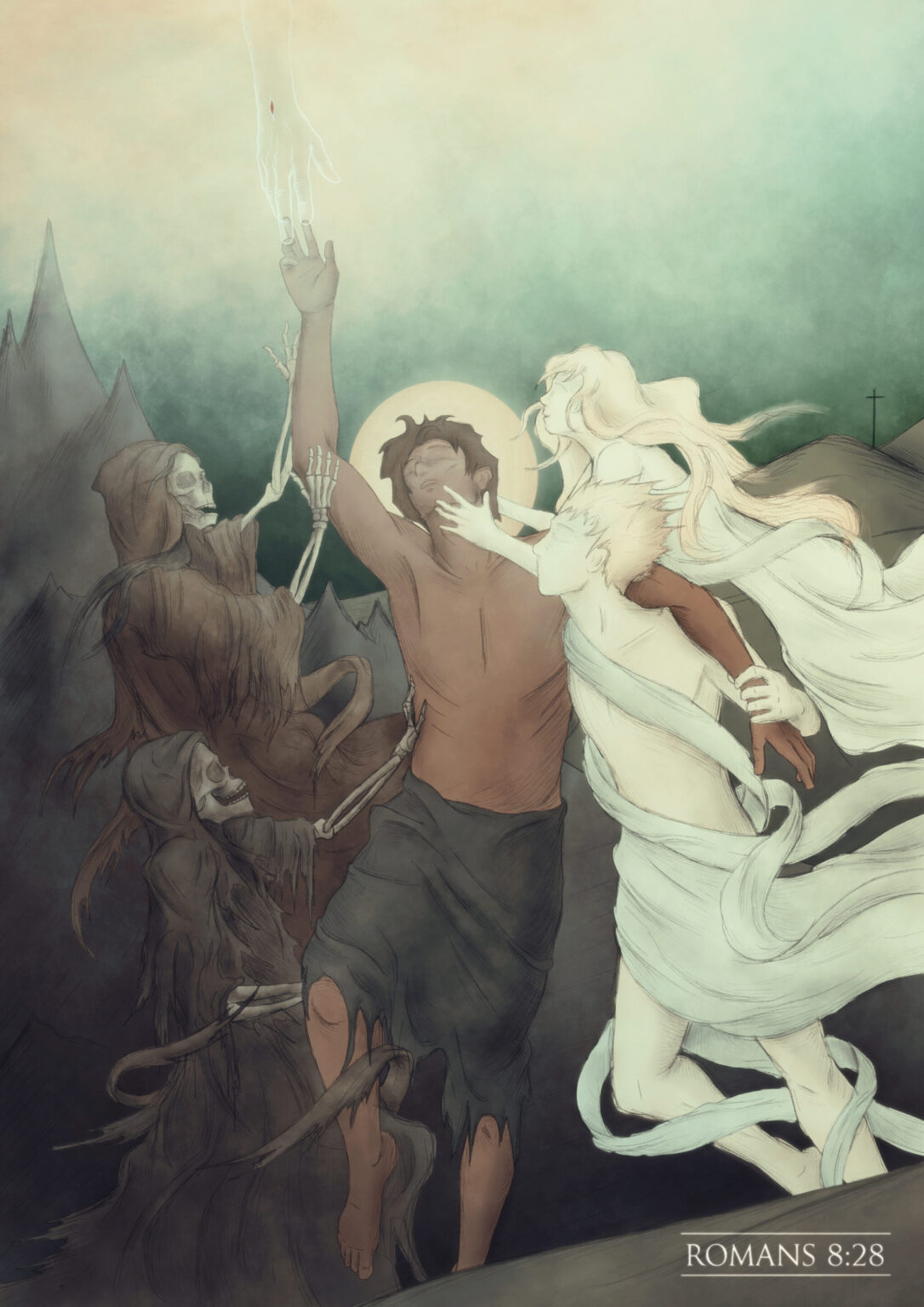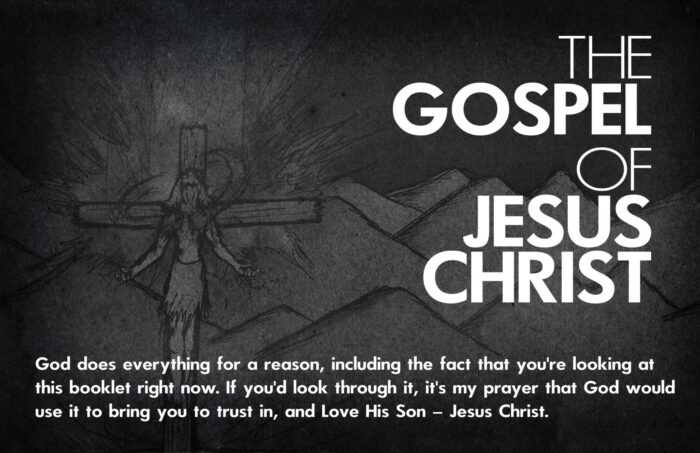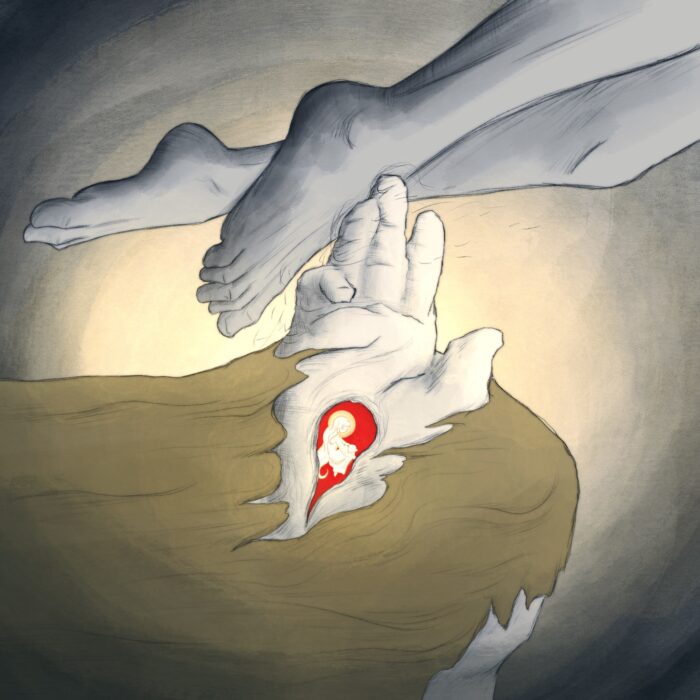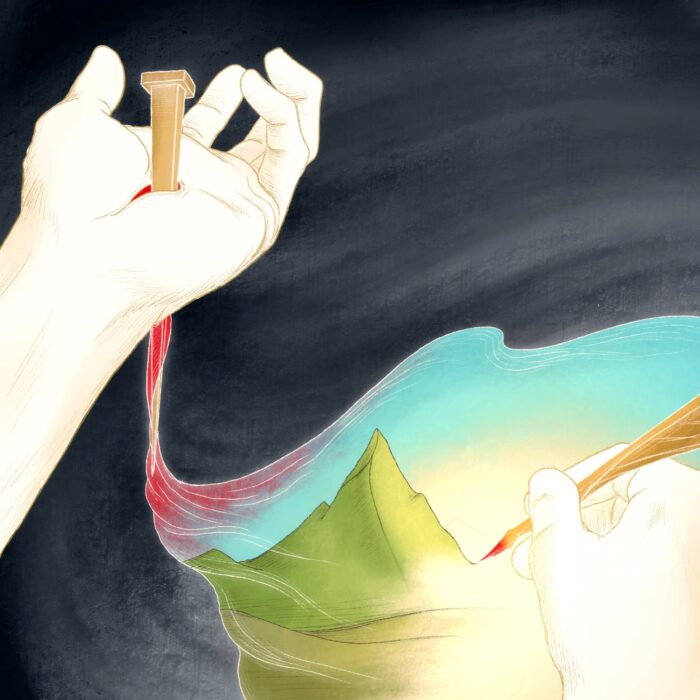“And we know that for those who love God all things work together for good, for those who are called according to his purpose.”
– Romans 8:28
With this picture I wanted to show that, because of the sovereignty of God, both the “good” and the “bad” events in life are the servants of the one who trusts in Jesus Christ. The skeletal figures represent life’s hardships, tragedies, and sufferings, whereas the luminous figures represent the joys, manifest blessings, and sweetness of life. Unlike the popular view that sees only “good” things as blessings, in this image I wanted to emphasize that both orders of experience serve to lift the saint upward, helping him toward fellowship with and conformity to Christ (which is the “good” toward which Paul says all things work in verse 29).
It was important for me to show that the skeletal hand (representing a painful or difficult circumstance) is the one lifting the saint’s hand most closely to the Lord. It is often in the hardest times that we are drawn most intimately and conformed most closely to Christ. Over and over again, it is our Lord’s grimmest servants that bring His children their greatest and deepest good. The cross in the background serves as a reminder that our King’s path to glory was marked by the sorrowful-yet-rejoicing sufferings of love, and ours will be as well. At the top of the image you can see a depiction of Christ reaching down and touching the trial-lifted hand of the saint. This is my attempt to show that the great good and joy toward which all things—and especially hardships—drive the Christian is ultimately Christ Himself. If we suffer with Him in this life, we will be glorified with Him (that is, drawn into the joy of intra-Trinitarian fellowship) in the next, Romans 8:17.
In Christ, every circumstance becomes the lovingly commissioned servant of our greatest good and God’s greatest glory. May He give us grace to believe these things when they are needed most.





